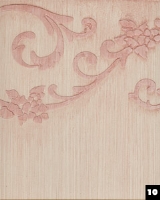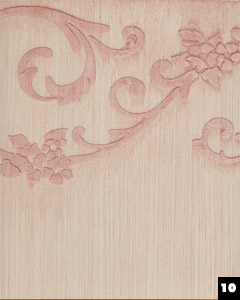
Strie
Encyclopedia
Strié is a popular form of faux painting
using glaze
and paint brushes to create a soft natural striped texture. Strié is a negative glaze technique. The glaze is generally rolled over the entire surface, and then removed with a tool such as a brush. The word strié can be used to describe this process of painting, or to describe the actual finish created.
Strié is a negative glaze technique. The glaze is generally rolled over the entire surface, and then removed with a tool such as a brush. The word strié can be used to describe this process of painting, or to describe the actual finish created.
Strié is a simple technique that can be altered and elaborated in many ways. It can be done on its own, with the streaks directed either vertically or horizontally. It can be brushed over a raised plaster
stencil. It is also very popular to overlap a horizontal and vertical strié, creating the look of fabrics such as linen or denim. This is often referred to as a linen weave or burlap strié.
Faux painting
Faux painting or faux finishing are terms used to describe a wide range of decorative painting techniques. The naming comes from the French word faux, meaning false, as these techniques started as a form of replicating materials such as marble and wood with paint, but has subsequently come to...
using glaze
Glaze (painting technique)
Glazes can change the chroma, value, hue and texture of a surface. Drying time will depend on the amount and type of paint medium used in the glaze. The medium, base, or vehicle is the mixture to which the dry pigment is added...
and paint brushes to create a soft natural striped texture.

Strié is a simple technique that can be altered and elaborated in many ways. It can be done on its own, with the streaks directed either vertically or horizontally. It can be brushed over a raised plaster
Plaster
Plaster is a building material used for coating walls and ceilings. Plaster starts as a dry powder similar to mortar or cement and like those materials it is mixed with water to form a paste which liberates heat and then hardens. Unlike mortar and cement, plaster remains quite soft after setting,...
stencil. It is also very popular to overlap a horizontal and vertical strié, creating the look of fabrics such as linen or denim. This is often referred to as a linen weave or burlap strié.

